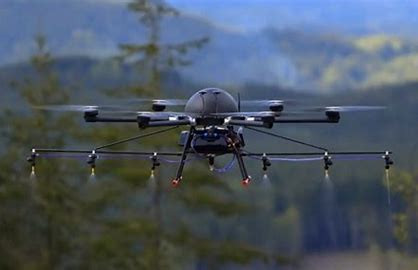
All through history, humans have had the inner desire to explore the world. With world exploration, comes the means of invasive species catching a ride from one side of the planet to the other. This can be done by cargo ships, cruise ships, navy ships, yachts, or sailboats crossing the seas. The other way invasive species can get transported is by airplanes; either passenger or cargo crossing the globe by way of the sky. This has always been a problem since early explorers, such as the Vikings started; however, it seems to be increasing in numbers and affecting the health of more and more native trees. On a positive note, agricultural drones may be able to help in the future to limit the demise of many tree species.
Types of invasive species
The first tree species that I knew about that was wiped-out by an invasive species is the Dutch Elm Disease or DED. This disease devastated the American Elm tree in North America and Europe continuing on to New Zealand, including all other countries worldwide except Greece and Finland. It was caused by a member of the sac fungi Ascomycota Ophiostoma ulmi that was spread by the Elm Bark Beetles that carried the fungi, which was originally from Asia.
The Disease was first noticed in Europe in 1910 before it went rampant spreading to most other areas of the globe. It was documented to have reached North America in imported timber in 1928.
Another very invasive species that is now in my own trees in my back yard is the Emerald Ash Borer (EAB), [Agrilus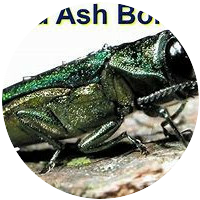 planipennis fairmaire] it was first discovered outside of Detroit, Michigan in 2002. The EAB is native to Asia and is said to have been brought to the US on wood packaging materials on both cargo ships and airplanes. The Beetle is now in 35 US states and 6 Canadian provinces.
planipennis fairmaire] it was first discovered outside of Detroit, Michigan in 2002. The EAB is native to Asia and is said to have been brought to the US on wood packaging materials on both cargo ships and airplanes. The Beetle is now in 35 US states and 6 Canadian provinces.
The beetles larvae grows and feeds on the inner layer of bark which chock off the vascular system of the tree, girdling it. In the past 20 years this beetle has killed 100’s of millions of white ash trees costing municipalities, property owners, nursery operators and forest products industries hundreds of millions of dollars.
Wholly Adelgid or often referred to as the Hemlock wholly Adelgid (HWA) [Adelges tsugae] is a tiny insect from Japan that was first observed near Richmond Virginia in 1951. Since then, it has been found from Georgia to Maine, and continues to the south-west Nova Scotia. The tiny insect feeds by sucking the sap out of the Eastern Hemlock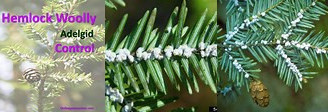 (Tsuga canadensis) tree. Once it gets to the tree it continues to feed for its lifespan and many insects can cause demise to the tree within 4 to 10 years. It is hard to spot the small insect, but you can see the white cotton tufts hanging from the underside of the hemlock’s branches or leaves.
(Tsuga canadensis) tree. Once it gets to the tree it continues to feed for its lifespan and many insects can cause demise to the tree within 4 to 10 years. It is hard to spot the small insect, but you can see the white cotton tufts hanging from the underside of the hemlock’s branches or leaves.
The spotted Lantern Fly (Lycorma delicatula) is a fly that is native to China that was first discovered in Pennsylvania in 2014. This fly is thought to have arrived here in a larval stage stuck to a pallet or similar shipping material. It has also been found in Japan, and South Korea where it feeds on grapes, stone fruits and apple (malus species), but it’s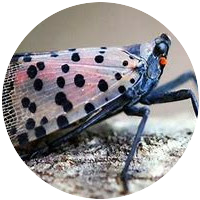 preferred host is the Tree of Heaven (Ailanthus altissima) which is also called the paradise tree. This fly has the potential to damage agricultural crops that are a major human food source that draw in millions of dollars in revenue.
preferred host is the Tree of Heaven (Ailanthus altissima) which is also called the paradise tree. This fly has the potential to damage agricultural crops that are a major human food source that draw in millions of dollars in revenue.
In the past two years an invasive species appeared that I have never seen before but has been around since 1869. The Gypsy Moth Caterpillar (Lymantria dispar dispar) is a non-native insect from France that was brought to the US by a student doing a silkworm breeding experiment to produce silk, where it escaped in Medford, Massachusetts. From there it repopulated quickly spreading to Maine, New Hampshire, Vermont, New York, Massachusetts, Rhode Island, Connecticut, Pennsylvania, Delaware, Maryland, Michigan, Wisconsin, Minnesota, Illinois, Indiana, Ohio, West Virginia, Virginia, and North Carolina.
The Gypsy moth caterpillar is a vicious and destructive insect that feed on several native trees such as
oak, maple, apple, crab apple, hickory, basswood, aspen, willow, birch, poplar, spruce, hemlock, and more. Oak is their preferred species. They defoliate the trees in earlier spring coming out of their larval stage feeding on the trees leaves; this is where they reach maturity and go through metamorphosis heading into adult stage moth. In the process they defoliate millions of trees before their outbreak is ended by natural causes such as viruses, predators, and diseases.
After all of this destruction over a three-year time frame they start the process all over again every 10 to 15 years. I can attest to their damage where they have defoliated 80 percent of the leaves on my hard woods for the past two years. They come like an army by the millions, it’s quite unbelievable.
Strategies to control Invasive species
As you can see invasive species are an ongoing problem that if not taking seriously and funded accordingly to control, can cause devastating consequences to our trees/ forests. Chemical spraying or injection is one method that can be used. This can be done by crop duster planes or agricultural drones, but chemicals can cause a whole host of problems for other life forms.
Besides applying chemicals, applying natural bacterium like BTK to the trees that are getting damaged is another method that can be used to target the invasive species. This bacterium come in many concentrations that can get mixed up and spread in large application on hundreds to thousands of acres with a crop duster plane, but it costs a lot of money. Agricultural drones are another way to spray a smaller area like 50 acres or fewer down to a single tree. The bacteria gets sprayed on the leaves so when the tree’s leaves get ingested it targets the feeder.
Types of drones getting used to help trees
In 2006 drones took a new hold on the industrial world where they began getting manufactured in all shapes and sizes. The definition of a drone is an unmanned aerial vehicle or (UAV). A drone is most often controlled by a person on the ground with a remote control. There are single-roter drones, multi rotor drones (agricultural), fixed-winged drones, fixed-winged hybrid drones, small drones, micro drones, tactical drones, reconnaissance drones, large combat drones, non-combat drones, target and decoy drones, GPS drones, photography drones and racing drones.
Of the many drones manufactured the ones the work the best for saving trees is the multi rotor or fixed wing drones. The multi rotor drones come in many types such as the multi copters, which serves as an “umbrella term” that covers all multi-rotor drone types that include:
- Tricopters – 3 rotors
- Quadcopters – 4 rotors
- Hexacopters – 6 rotors
- Octocopters – 8 rotors
The downside to multi-rotor drones is that most only have a battery operating range of 20 to 40 minutes. They can also fly for 3 to 4 miles in distance.
The fixed wing drone looks and flies much like an airplane, so it has upward thrust under its wings, so it takes less energy to stay in the air. An electric version of these drones can stay in the air for 2 to 3 hours, where a petrol fueled version can stay in the air for 24 hours. These types of drones take much skill with training to operate plus they need a runway for takeoff and landing.
When you are flying a drone, it is best to have one with a built in GPS so when the unit knows it is low on battery it can automatically return to the place that it took off from. This can help avoid a costly crash like the ones not equipped with GPS.
When it comes to drones assisting in saving the forest, I had a firsthand experience with it. A buddy of mine has also witnessed his oak trees foliage getting gobbled up by the gypsy moth caterpillar over the past two years. He purchased an agricultural hexacopter sprayer drone with GPS and a camera feature with a one litter spray tank that has a fixed spot for attachment to mix the BTK for spraying the trees, mostly Oaks. This drone was able to spray 30 acres in 20 minutes time frame.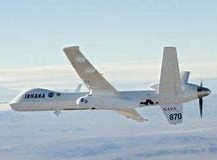
Equipped on these drones are cameras for videotaping or taking photographs of the landscape from all different elevations which can also act as surveillance to see what is going on throughout your properties.
Other drones have the capabilities to plant trees by dispersing seeds in geographical areas where it’s hard for humans and machinery to reach.
Some drones fight wildfires in many places of the world that can dump water or fire retardant dusts. These drones also put the dangers away from people themselves which is lifesaving.
Conclusion
In this article I discussed how invasive (non-native) fungi, viruses and insects are continuously becoming an alarming threat to our native plants, trees, and forests. Our state and governmental systems, with the help of our citizens, need to devise a plan to tackle this problem before we lose our native trees that offer so much to all life forms. I discussed how the use of agricultural drones can help by means of photographing and videotaping our forests, to spraying them with a non-invasive bacterium or chemicals. My mission in this article was to educate you with the problems we are all facing with ever-increasing global trade. If you have any questions or comment, please leave that or an email.

